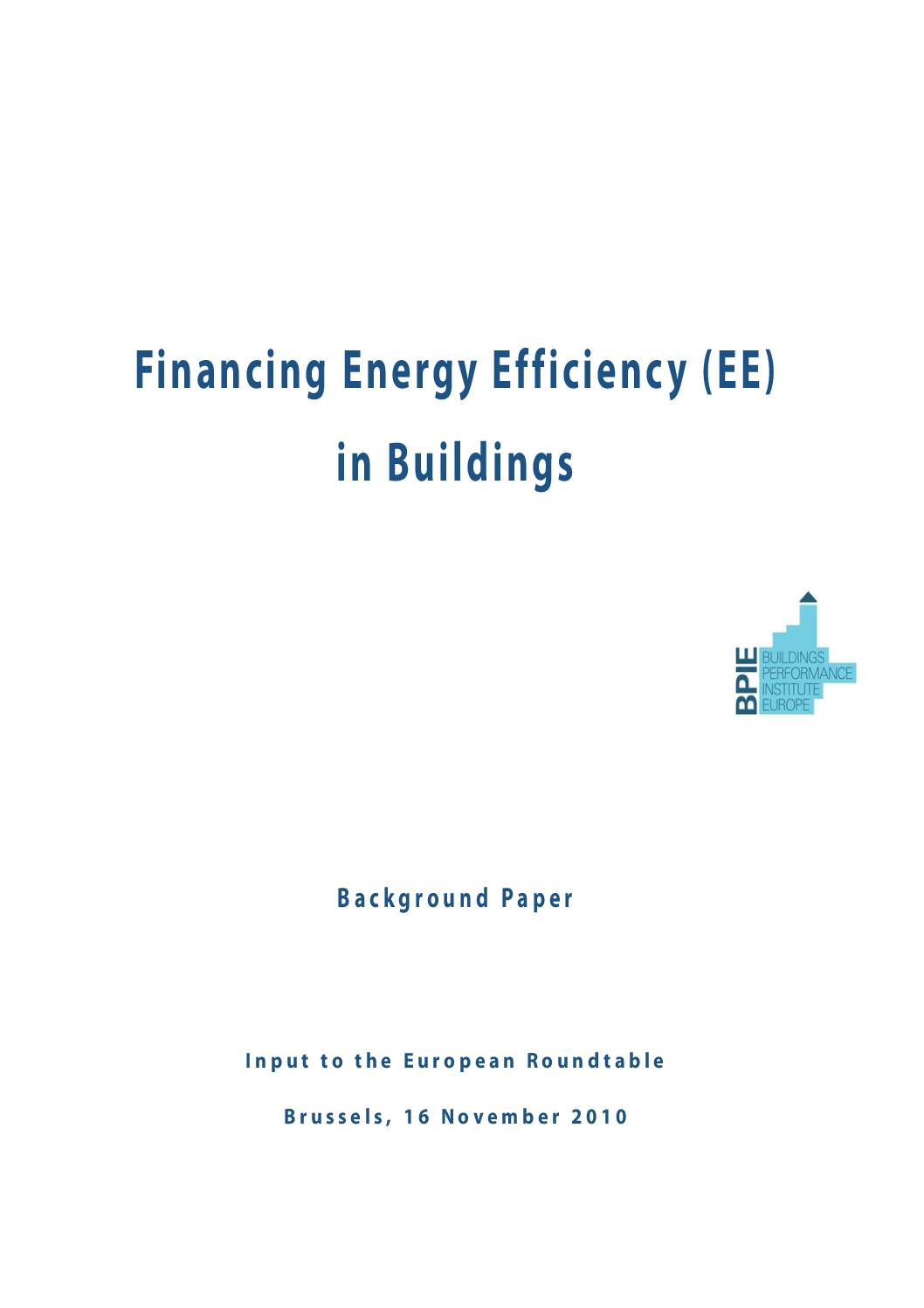Buildings account for 40% of total energy consumption in the European Union, with more than half from the residential sector. While only some new buildings benefit from model energy performance, the greater part of the saving potential has to be realised in the vast building stock already in existence.
The need to improve energy efficiency in buildings is now greater than ever and presents a unique opportunity to address the challenges of energy security, climate change and economic development. An increase in Member States’ building energy performance would allow the European Union to comply with the Kyoto Protocol, and to honour both its long term commitment to maintain the global temperature rise below 2°C and its effort to achieve the 20/20/20 targets by 2020.
Financing Energy Efficiency in buildings is still a major challenge. Despite the proven cost-effective opportunity to reduce energy consumption, a significant proportion of the energy efficiency improvement potential is not being realised. Several barriers and market failures inhibit energy efficiency improvements in buildings. Information failure, high subsidies, lack of technical expertise, uncertainty over savings, and externalities still characterise the energy efficiency market. Residents of established households do not easily change their energy consumption habits and, in most cases, the so called “split incentive” discourages both building owners and building occupiers from investing in energy efficiency measures if direct benefits are not perceived. Financial barriers are crucial in inhibiting investment in energy-efficient building refurbishment. Such barriers include, inter alia, initial cost barrier, high transaction costs, long payback time, and risk exposure. Furthermore, traditional financing investment criteria do not apply to energy efficiency investments, lack of knowledge among finance providers of energy efficiency specificities prevents customers from accessing capital, and the absence of standardised measurement and verification practice further increases transaction costs. Due to the considerable impact of these financial barriers on the financing of energy-efficient building refurbishments, the paper focuses primarily on these barriers.
Share this

Sectors: Buildings, Cross cutting, Renewables
Country / Region: Europe
Tags: building types, efficient building types, energy, energy efficiency, specific financing mechanismsIn 2 user collections: Building Efficiency Accelerator: Finance Resource Collection , Building Efficiency Accelerator: Certifications / Above Code Resource Collection
Knowledge Object: Publication / Report
Published by: Building Performance Institute Europe (BPIE)
Publishing year: 2010
Author: Building Performance Institute Europe (BPIE)
